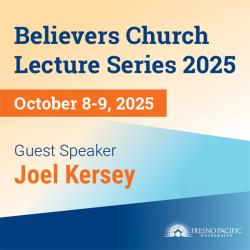Nearly 60 years ago, the Beatles crooned, “All the lonely people, where do they all come from? All the lonely people, where do they all belong?” These questions remain relevant today. The loneliness epidemic does not just affect one age group but spans all generations. Humans are wired for connection, created by God for both intimacy and community. Without it, we fail to thrive, leading to a slew of physical and mental health problems.
Loneliness is a normal feeling that signals a mismatch between what we want and what we have. Our hopes and reality don’t align. Our unmet expectations for the quantity and quality of our relationships create loneliness.
The perception of loneliness is highly individual, differing from person to person. Some people appear isolated yet don’t feel lonely. Others may be surrounded by people yet experience the ache of disconnection. A marriage can be terribly lonely when characterized by emotional distance. A day of solitude might be viewed as a gift or a curse. Having one or two close friends may be met with contentment or frustration. It depends on the person’s expectations.
It also depends on the underlying need. Research points to two types of loneliness: social and intimate.
- Social loneliness highlights the need for a circle of friends, a community that bears one another’s burdens (Galatians 6:2).
- Intimate loneliness is the need to share life with someone else, which is often fulfilled by a spouse but could also be met through a best friend, as seen in the friendship between David and Jonathan (1 Samuel 18:1).
Expectations shaped by society, the church or social media may increase both social and intimate loneliness.
Loneliness signals that change is needed. Our God-given need for connection and community is not being met. Just like hunger tells you to eat, loneliness tells you to reach out and connect. The problem is that when loneliness is blended with fear, it tells us to withdraw, to protect ourselves from possible rejection. The more we withdraw when lonely, the fewer opportunities we have for connection. The greater disconnection we experience, the more we feel excluded and rejected, making it even more difficult to reach out. This vicious cycle perpetuates loneliness.
Where do they all come from? At any age, people can get stuck in a cycle of loneliness, struggling with unmet needs for social and intimate connection. The pain of feeling alone exists throughout our lives, but different types of loneliness prevail at certain stages, based on developmental needs.
- Young children (ages 3–7) need playmates, engaging in shared activities and feeling part of a social group. As they grow, children desire close friendships where they feel known and understood, sowing seeds of intimate connection. In middle childhood (ages 7–12), it becomes increasingly important for kids to have a group of friends in which they feel included and accepted. Bullying and social rejection can lead to higher rates of social loneliness at this developmental stage.
- Teenagers look for both quality and quantity in friendships. Loneliness in the teenage years is often connected to intimate loneliness, lacking quality connection with a close friend or a romantic partner, but social loneliness also exists when a teenager lacks close friends or experiences rejection or victimization. Teenage boys, who often run in groups, experience greater intimate loneliness. Adolescent girls, on the other hand, may have one or two close friends but may lack a social group, suffering from social loneliness.¹
- Young adults (ages 18–21 and older) often face significant life changes at the same time they are needing a friend group or are seeking out a romantic partner. The number of close connections might shift at this stage because of leaving school, relocating, starting a career or dating. Young adults can experience high rates of both social and intimate loneliness in this developmental transition.
Someone once joked that the greatest miracle Jesus ever performed was being a middle-aged man with 12 close friends. In adulthood, marital status is often a buffer against intimate loneliness. However, research shows social loneliness peaks in early and middle adulthood, when it can be difficult for both men and women to form a peer group.²
Contrary to common beliefs, many older adults maintain strong intimate and social connections. However, natural changes in this developmental stage lead to higher rates of loneliness for those over the age of 80. Older adults face loss of loved ones, lack of mobility or caregiving responsibilities that contribute to feeling isolated. Single, older adults living alone who don’t participate in social or religious groups experience higher rates of both social and intimate loneliness.
Studies on intimate loneliness reveal a U-shaped pattern, with the highest rates among young people (ages 15–24) and older adults (80+). In contrast, social loneliness tends to peak in middle adulthood, forming a bell-shaped curve.² Disruptions at any stage, such as a breakup or divorce, can lead to intimate loneliness, while geographical moves or job changes often trigger social loneliness, disrupting support networks like church communities.







